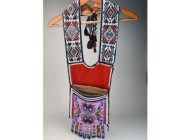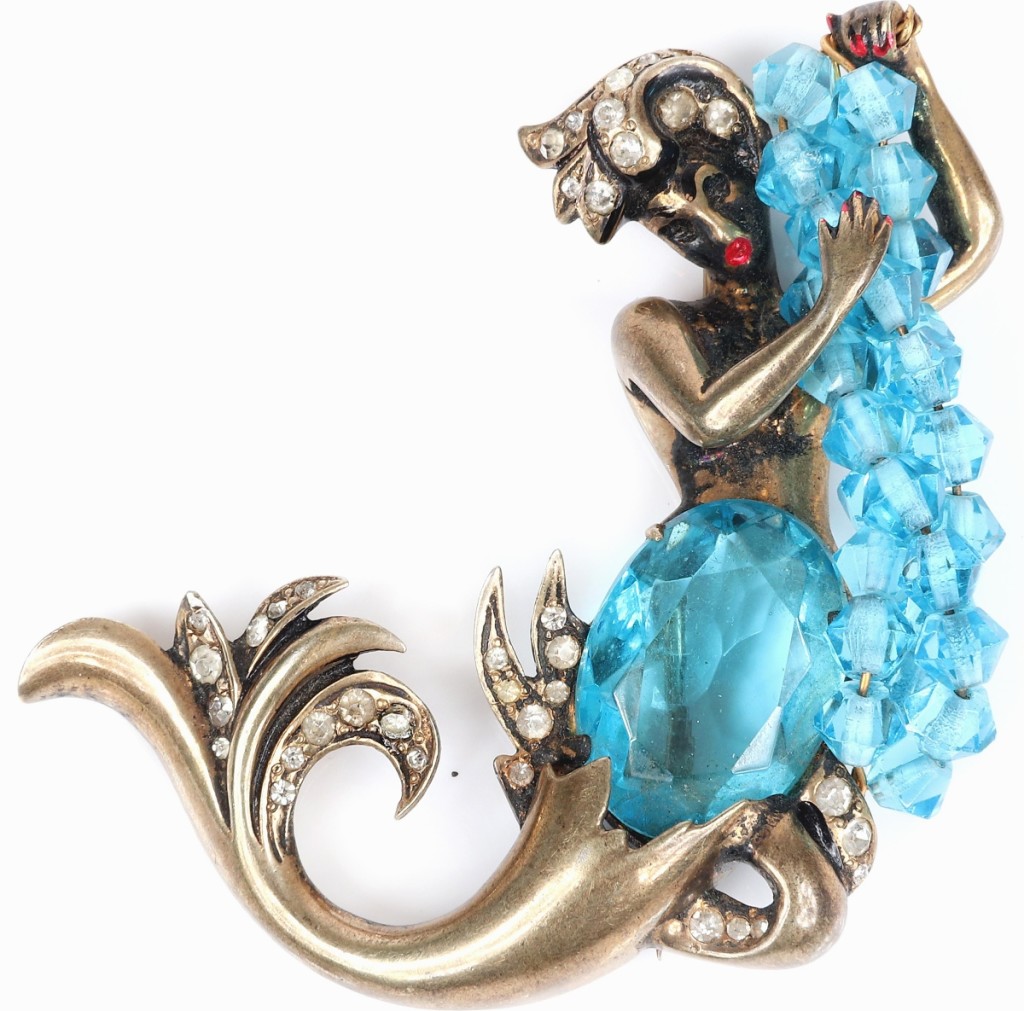
The sale’s top lot was found in this sterling vermeil mermaid brooch with aquamarine crystals. The firm had sold other Eisenberg mermaids in the past and noted that it was one of the more valuable of the company’s designs on the secondary market, though they had never had one with aquamarine crystals. This sold for $4,500.
Review by Greg Smith, Catalog Photos Courtesy Ripley Auctions
INDIANAPOLIS, IND. – It was a rare occurrence in the costume jewelry world when Ripley Auctions sold the single owner Eisenberg Originals collection of Sharon G. Schwartz, a dealer and collector who wrote the 2017 guide on the maker titled Eisenberg Originals, The Golden Years of Fashion, Jewelry, and Fragrance, 1920s-1950s. Nearly every single lot in the September 12 sale was featured in the book, a collection Schwartz had built since the 1980s.
“The fact that it was Sharon’s collection and they were all published in the definitive Eisenberg book really added to the sale,” said Andrea Hastings, vice president and head of inventory at Ripley. The pieces were pristine and in very good condition, we got prices for Eisenberg that we have never seen before.”
The 284-lot sale generated around $88,000 in total sales, attracting about 150 bidders.
Ripley’s vice president of operations Kristen Hein said, “We had bidders we had never seen before. We run costume jewelry sales every month, so we have a very loyal costume jewelry audience, and still this brought additional bidders to us from around the world.”
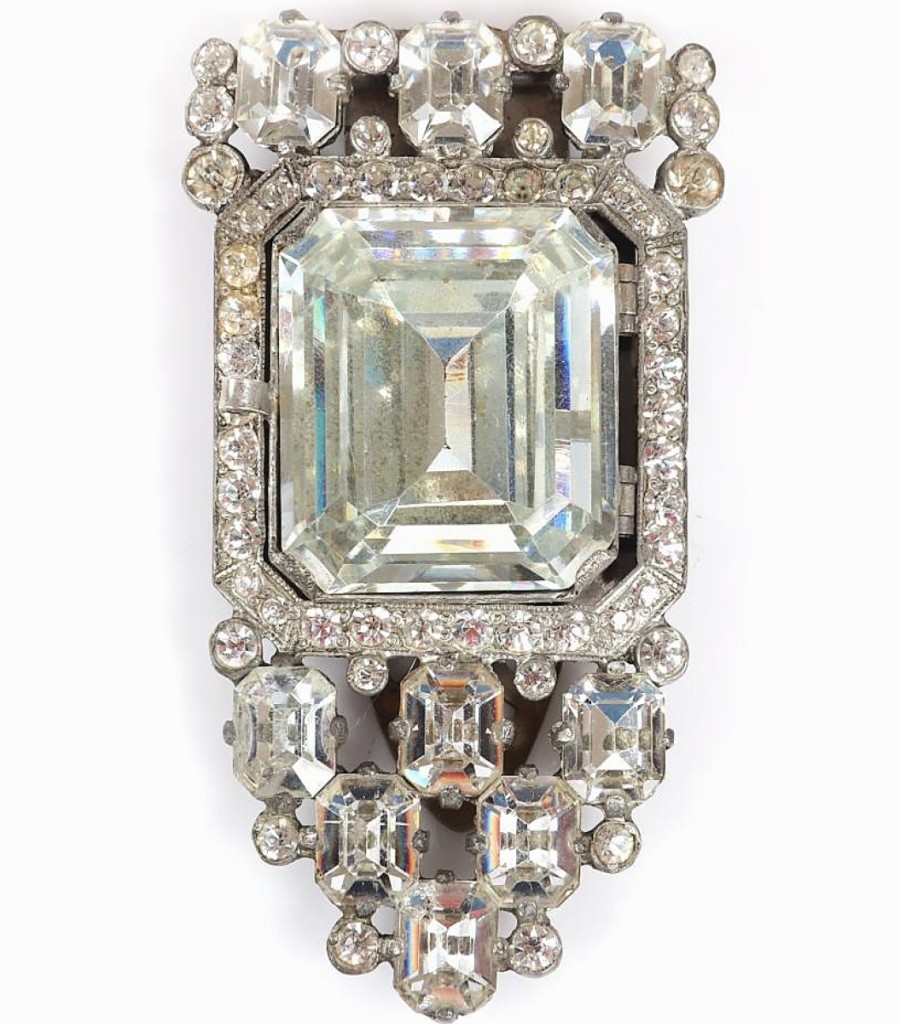
Sharon Schwartz had never seen another example of this locket dress clip. The picture on the inside featured two women, perhaps a clue to the original owners. The locket, with square cut central crystal and bezel-set rhinestones, sold at $4,250, the second highest result in the sale.
In a call with Antiques and The Arts Weekly, Schwartz recalled the beginning of her journey with Eisenberg Originals. “I remember the first rhinestone piece that I found. Just from looking at it, the construction of it, it was so beautifully done. I turned it over and saw Eisenberg Originals. I had collected vintage jewelry for a while and I didn’t even recognized the name. It took a lot of research to find small bits of information. There was enough to realize there had to be more information. I went on the hunt to antiques stores, online, informational collecting sites, eventually it seemed to all come together. I was really able to amass a phenomenal collection.”
The offering was likely the largest releases of Eisenberg jewelry to ever hit the secondary market. “Eisenberg jewelry is extremely well made, its rare, it wasn’t produced like some of the other names were,” Hastings said. “It’s harder to find Eisenberg jewelry like this, which included pieces that nobody has ever seen before. You just don’t find it. In a regular year, we see maybe ten pieces.”
Schwartz offered with each lot any advertisements or related ephemera that she had found in her research, including Vogue advertisements.
“It took a period of two and a half years to write the book,” Schwartz said. “On a daily basis there were things that I looked for,” relating to the company advertisements, archive photographs and patent cards.
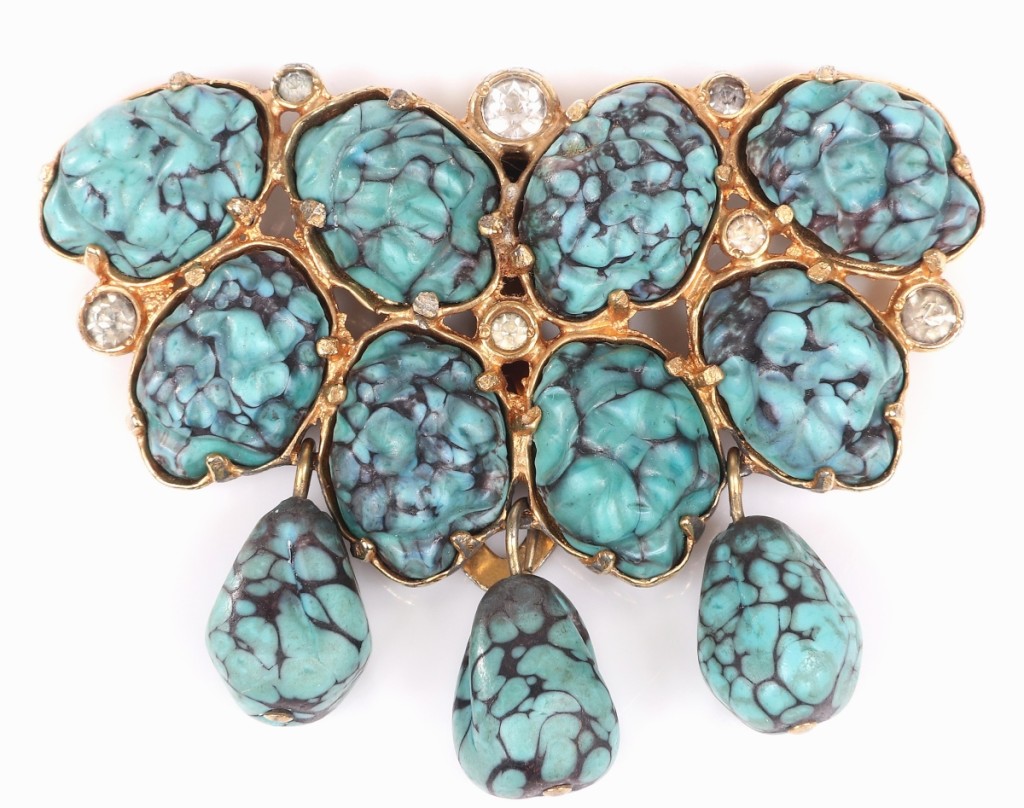
Hastings related she was unsure of the faux turquoise glass on this piece and others in the sale, but she grew to adore it. Bidders liked this brooch for its contrast with the glass and the gold pot metal backing as it went on to sell for $2,000 on a $300 estimate. An identical form with emerald green glass stones did better at $2,375.
The sale also included garments, accessories, postcards, perfume bottles and other objects that were released by Eisenberg Originals. The company is one of the first American design houses and began as a partnership between Jonas Eisenberg and his sons Harold and Sam, who principally manufactured dresses under Eiseneberg & Sons in 1919. The company included rhinestone accents on their dresses and by 1935 they released a separate line of jewelry that saw various colored crystals and rhinestones combined with enamel to produce shimmering and affordable regalia.
“There were things we had never seen before, many of those colored pins are really hard to find,” Hastings said. “We’re used to thinking the figurals are the best, but the colorful stone Eisenberg pieces… there’s nothing else that looks like them.”
Leading the sale at $4,500 was a sterling vermeil mermaid brooch with the figure holding a strand of aquamarine crystals, a larger aquamarine crystal around the figure’s waist and painted with red enamel lips. “The mermaid is kind of the quintessential piece – everyone wants the mermaid,” Hastings said. “We’ve sold several in the past, but I don’t know that we’ve ever had a blue one, because they did them in different stone colors. The blue crystals are desirable, they look like water.” The piece had been advertised in Vogue in 1946.
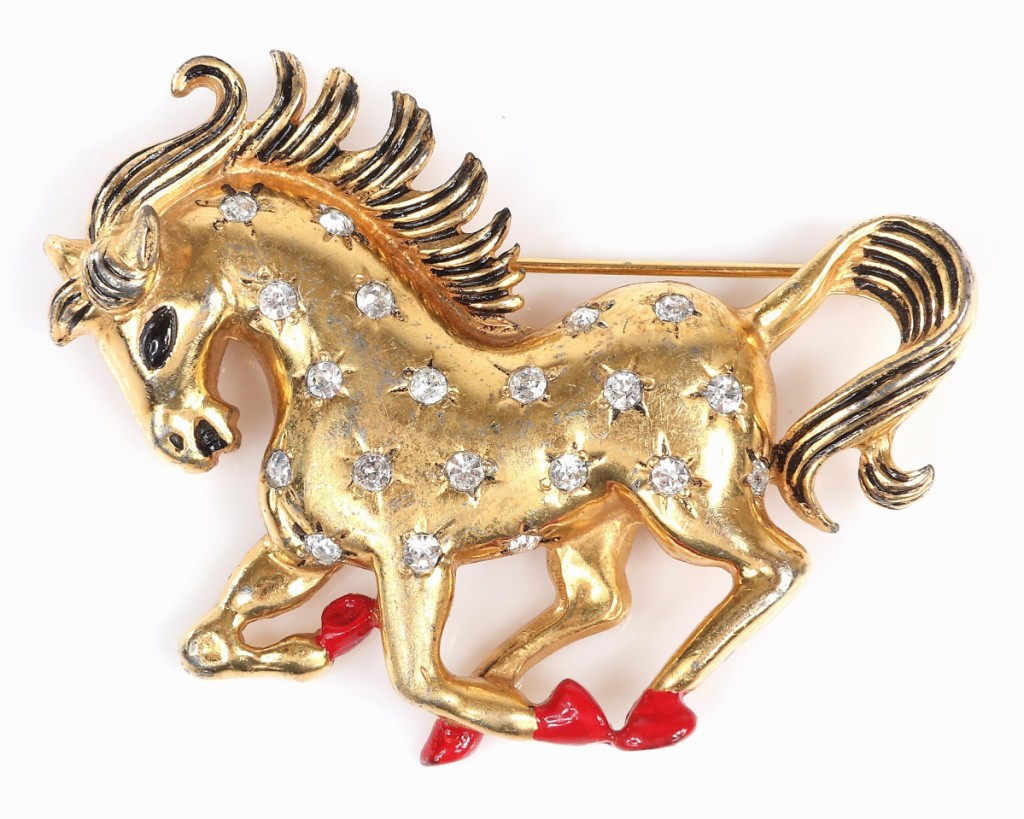
A gold-plated prancing horse with incised stars and rhinestone centers took $1,500 on a $500 estimate. It dated to the late 1930s.
Schwartz felt that a locket dress clip with square cut central crystal was a prototype, as she knows of none other. She believed it was designed for a family member or customer, and the locket contains a photograph of two women inside, perhaps one of whom was the original owner. It brought $4,250.
Rising above a $350 and $300 estimate were two similar brooches with differing glass stones that brought $2,375 and $2,000, respectively. The higher was for a circa 1930 form that featured a cluster of eight emerald green stones resembling fruit and the latter featured similar shapes but with turquoise colored glass.
Most of the sale’s bidding occurred online, with about ten bidders opting to visit the gallery and bid in person.
“We’re really happy with the results,” Hastings said. “During Covid, we find that people are bidding maybe more than ever.”
For additional information, www.ripleyauctions.com or 317-251-5635.












